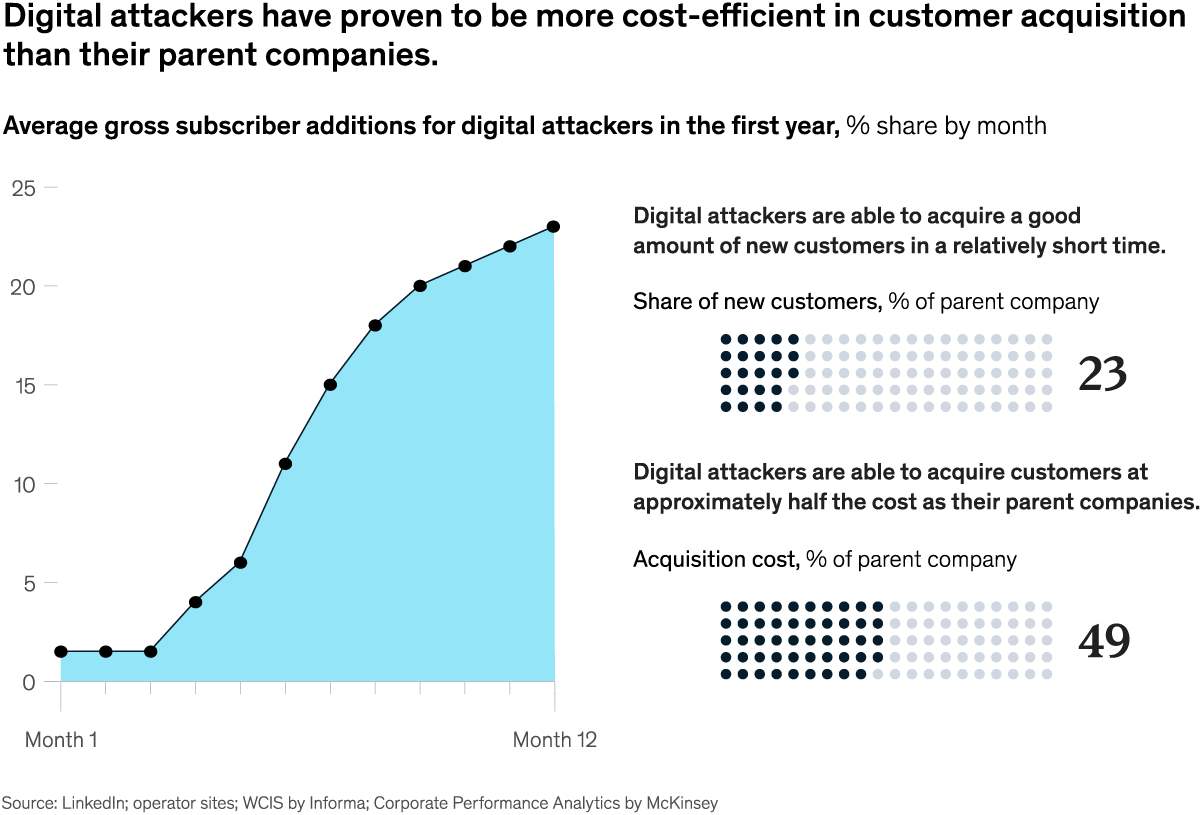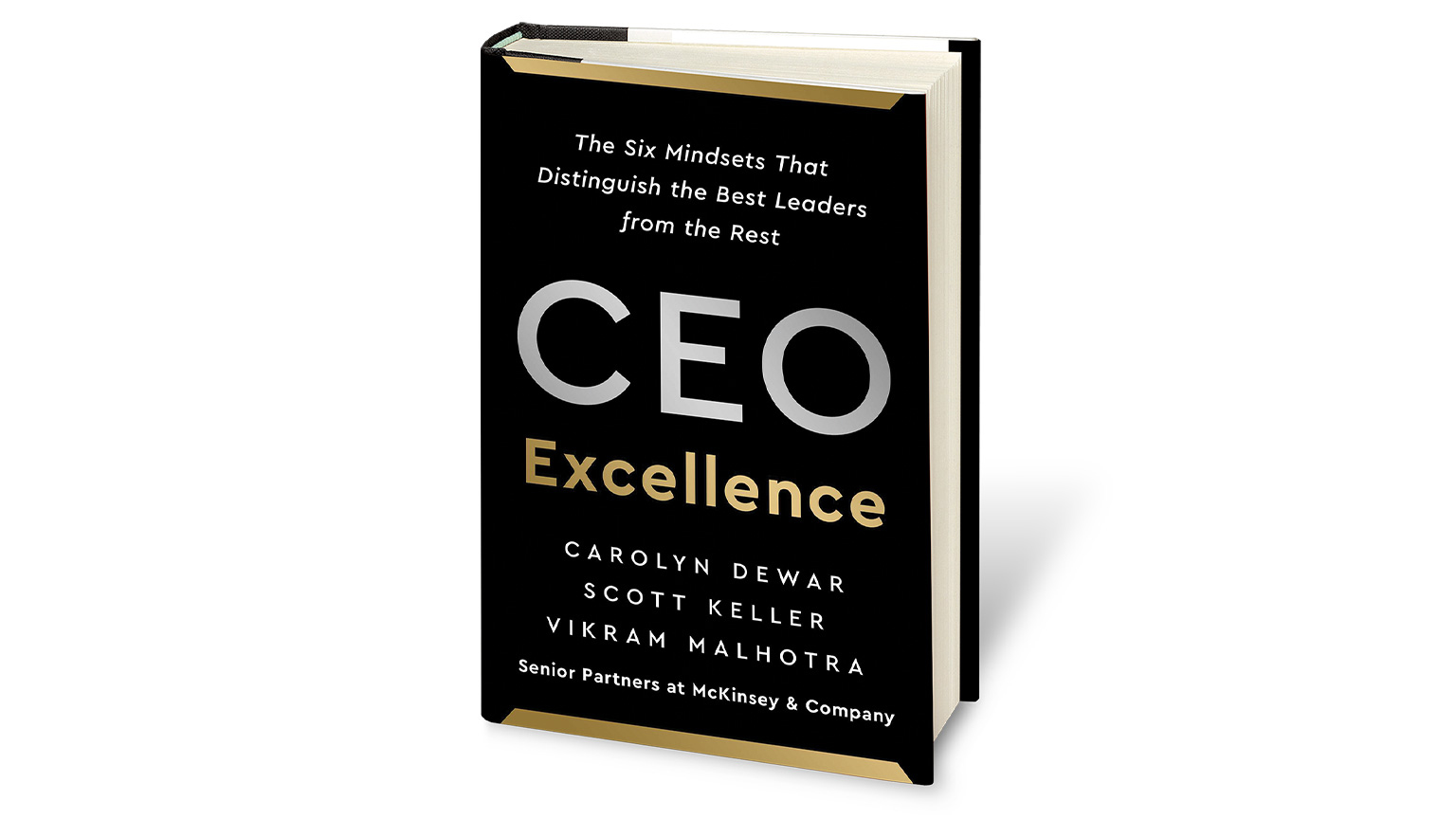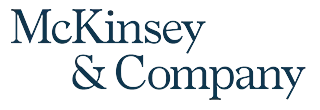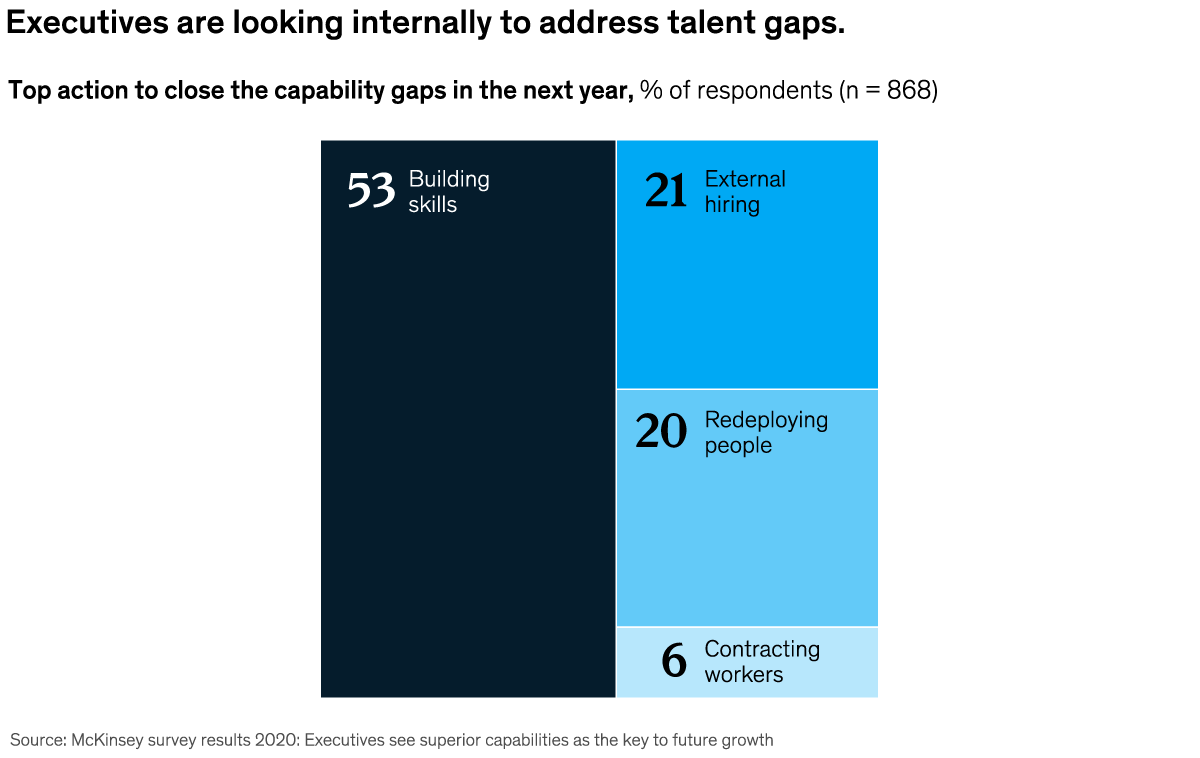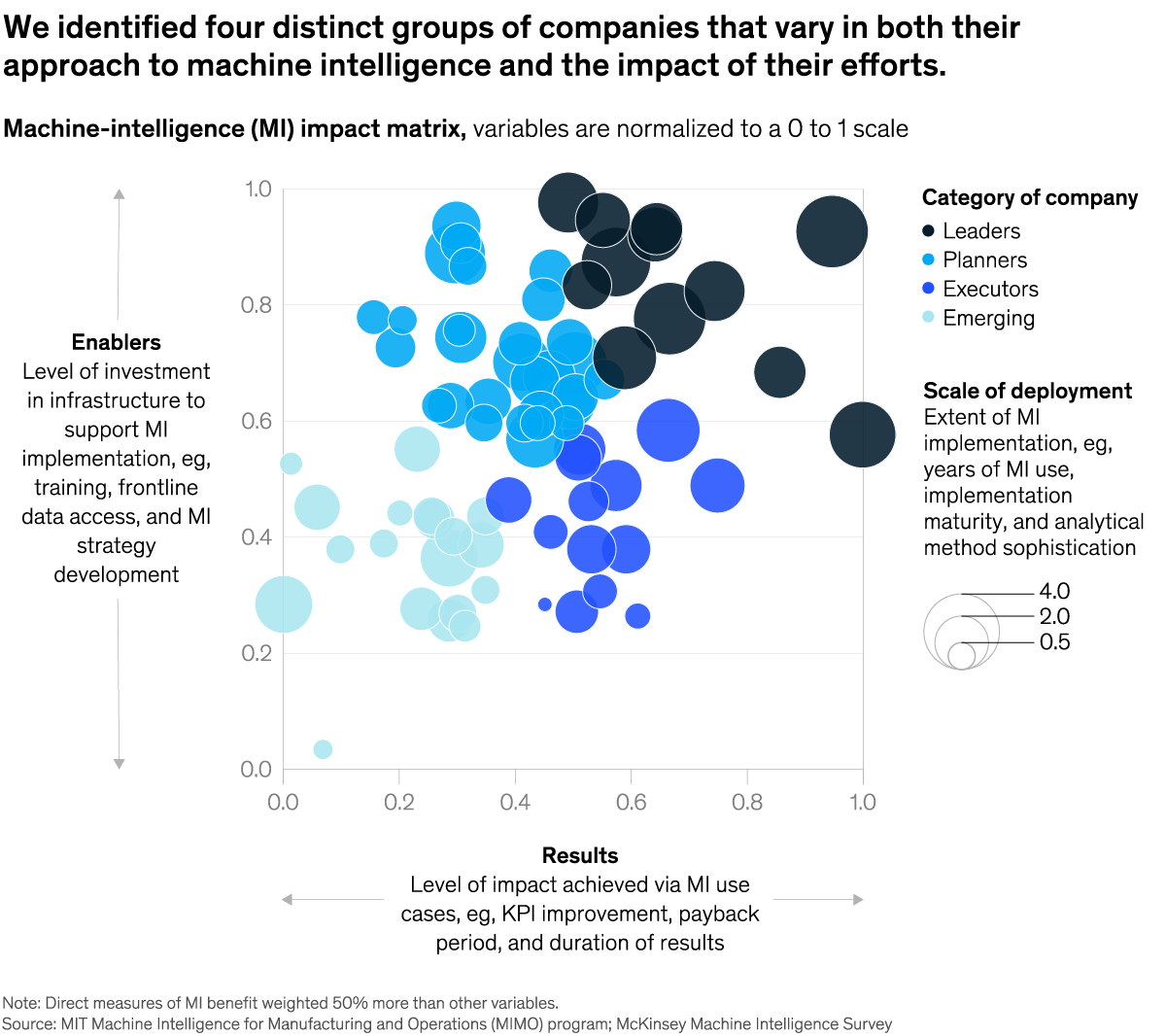Archives
- By thread 5220
-
By date
- June 2021 10
- July 2021 6
- August 2021 20
- September 2021 21
- October 2021 48
- November 2021 40
- December 2021 23
- January 2022 46
- February 2022 80
- March 2022 109
- April 2022 100
- May 2022 97
- June 2022 105
- July 2022 82
- August 2022 95
- September 2022 103
- October 2022 117
- November 2022 115
- December 2022 102
- January 2023 88
- February 2023 90
- March 2023 116
- April 2023 97
- May 2023 159
- June 2023 145
- July 2023 120
- August 2023 90
- September 2023 102
- October 2023 106
- November 2023 100
- December 2023 74
- January 2024 75
- February 2024 75
- March 2024 78
- April 2024 74
- May 2024 108
- June 2024 98
- July 2024 116
- August 2024 134
- September 2024 130
- October 2024 141
- November 2024 171
- December 2024 115
- January 2025 216
- February 2025 140
- March 2025 220
- April 2025 233
- May 2025 239
- June 2025 303
- July 2025 32
-
Want to keep your employees? Redesign the office
the Daily read
Reimagine physical workplaces .
Share this email 



AN ARTICLE A DAY, PICKED BY OUR EDITORS 
Workspaces change with the times. While your parents may have had dedicated offices or assigned work stations, there’s been a trend toward more flexible setups for years, if not decades. So what’s shaping workspace design now—for example, are open plans here to stay? As many contemplate a return to physical offices, get perspective on people-centered design and what comes next in a new interview with Diane Hoskins, co-CEO of Gensler, a global design and architecture firm. Check it out. — Katherine Tam, digital editor, New York 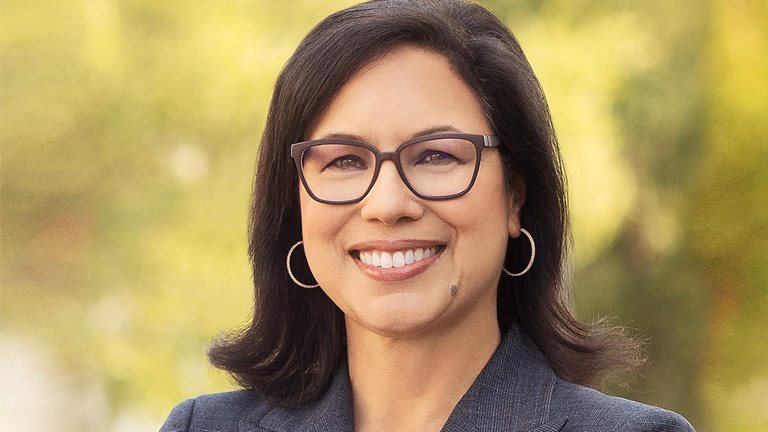
The rebirth of workspace design: An interview with Gensler co-CEO Diane Hoskins As offices consider how to reopen after two years of disruption from COVID-19, Hoskins sees an opportunity to create better, more human-centric workspaces. Reimagine physical workplaces 

Quote of the Day “Many CEOs focus on getting individual leaders who are great at their roles. The excellent CEOs focus more on the dynamic between them, the psychology of the team and how they work together.” —Carolyn Dewar, McKinsey senior partner and coauthor of forthcoming McKinsey book CEO Excellence, on leadership lessons from the world’s best CEOs 
Chart of the Day 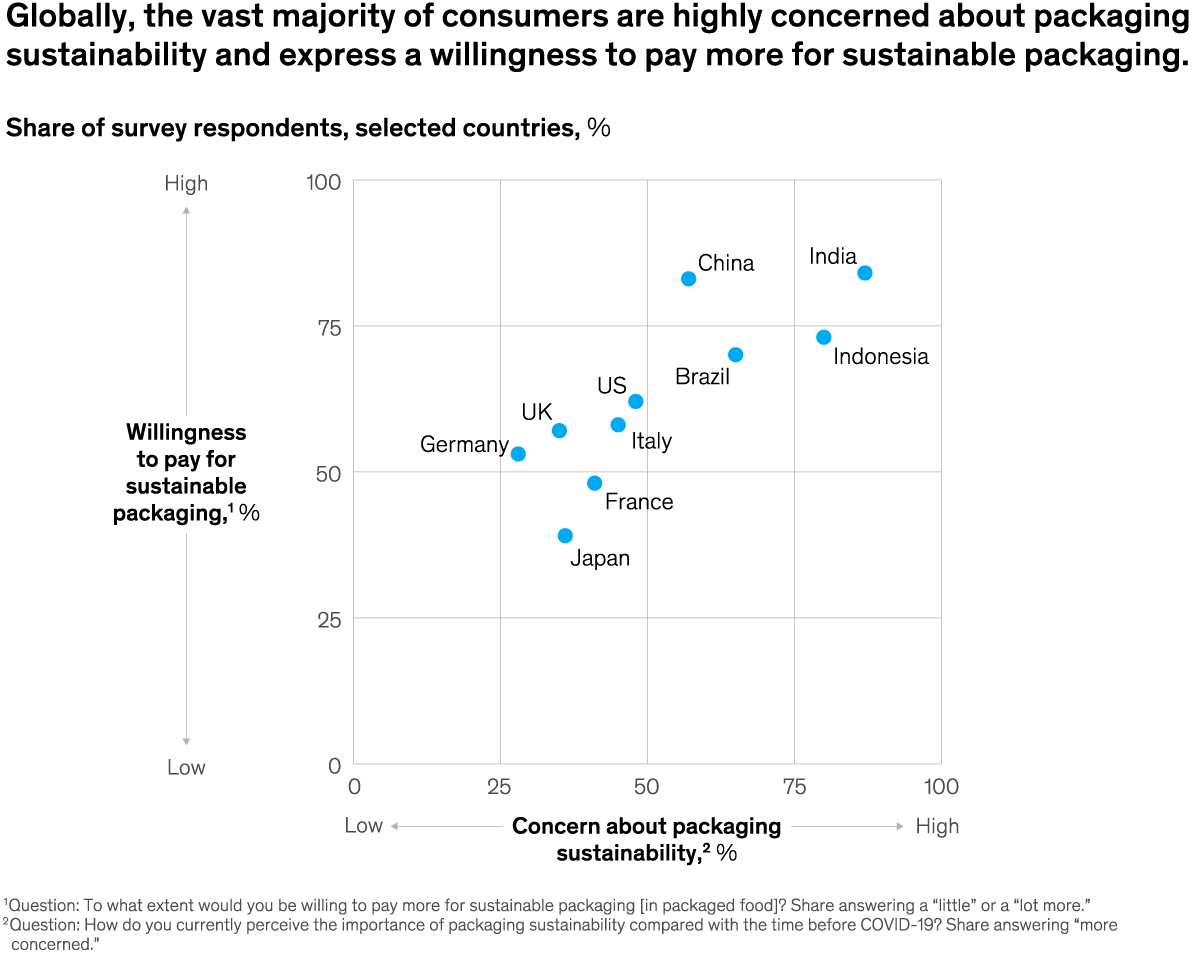
See today’s chart 
Also New 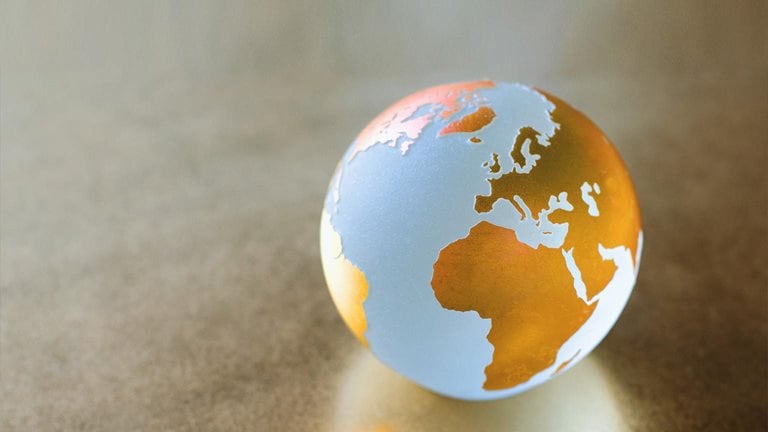

Going global: A conversation with Revolut’s CFO Mikko Salovaara While other fintechs seek to establish a beachhead in a specific region or category, UK-based Revolut is looking to build a global ecosystem from the start. Adapt quickly 
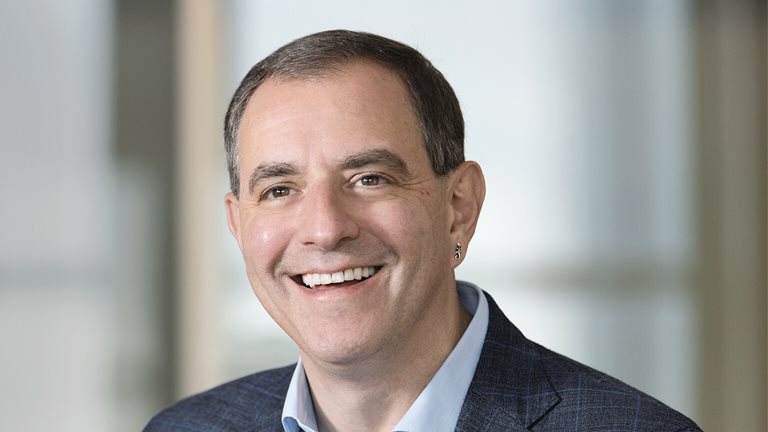

Forward Thinking on pandemic paradoxes, labor market myths, and ‘cowboy capitalism’ with David Autor A leading US economist talks about what has changed in the pandemic, the rise of China, the globalization of trade, and spreading automation. Understand market trends 


Power to move: Accelerating the electric transport transition in sub-Saharan Africa How governments, development partners, and private-sector stakeholders can build an enabling ecosystem for electric vehicles in the region. Understand global trends 


Follow our thinking 



Share these insights Did you enjoy this newsletter? Forward it to colleagues and friends so they can subscribe too.
Was this issue forwarded to you? Sign up for it and sample our 40+ other free email subscriptions here.This email contains information about McKinsey’s research, insights, services, or events. By opening our emails or clicking on links, you agree to our use of cookies and web tracking technology. For more information on how we use and protect your information, please review our privacy policy. You received this email because you subscribed to the Daily Read newsletter. Manage subscriptions | Unsubscribe Copyright © 2022 | McKinsey & Company, 3 World Trade Center, 175 Greenwich Street, New York, NY 10007
by "McKinsey Daily Read" <publishing@email.mckinsey.com> - 06:44 - 1 Mar 2022 -
Will more of your stuff be US-made? Find out why that might be the case.
McKinsey&Company
New spending for US factories .

Made in the USA The news • From Asia to America. After years of relying on foreign factories, many based in Asia, business leaders are expanding US manufacturing again. Recently, one automaker stated that it would likely invest $4 billion to make more of its electric vehicles and batteries in Michigan; another company plans to build a $17 billion chip-making plant in Texas. Shipping delays, rising costs of freight, and clogged ports have all induced leaders to consider localizing production. [NYT] • A raw deal for materials. In January, growth in US manufacturing slowed slightly for the third month in a row. Amid the Omicron surge, new orders and production fell to the lowest point of the past year and a half. Demand for raw materials continues to far outstrip supply, contributing to an increase in prices of nearly eight percentage points—the biggest jump since late 2020. [Bloomberg] 
Reviving manufacturing could add up to 1.5 million jobs, particularly among middle-skill workers, helping to recalibrate the US labor market and bolster the middle class. 
Our insights • Building an inclusive workforce. Manufacturing is the main employer in about 500 counties across the US. In these communities, the manufacturing sector employs a wide range of the population—and it does so more inclusively. In most cases, employees don’t need a four-year degree to get hired, and they also enjoy higher salaries than service sector workers. However, to draw new talent, the industry must strengthen its reputation. By partnering with colleges and trade schools, companies may attract more young people. • One million open jobs. Restoring competitiveness in 16 manufacturing industries could raise America’s annual GDP by more than 15%, according to research from the McKinsey Global Institute. Yet as the US manufacturing sector speeds toward a digital, automated, and more sustainable future, more than one million jobs remained unfilled in October 2021—the highest on record. Explore three actions leaders can take to restore manufacturing to its position as a powerhouse of the US economy. — Edited by Belinda Yu Fuel US competitiveness 
Was this forwarded to you? Sign up here. Or send us feedback — we’d love to hear from you. 

Follow our thinking 


This email contains information about McKinsey’s research, insights, services, or events. By opening our emails or clicking on links, you agree to our use of cookies and web tracking technology. For more information on how we use and protect your information, please review our privacy policy. You received this email because you subscribed to the On Point newsletter. Manage subscriptions | Unsubscribe Copyright © 2022 | McKinsey & Company, 3 World Trade Center, 175 Greenwich Street, New York, NY 10007
by "McKinsey On Point" <publishing@email.mckinsey.com> - 10:08 - 28 Feb 2022 -
RSVP Innovation Talk Webinar: Hands on Hands off Monitoring Capabilities
Schneider Electric
Hands on / Hands off Monitoring Capabilities WebinarEcoStruxure IT Expert. Gives you one view to proactively monitor and manage your IT equipment from wherever-you-are. Gain more than alarms, unlock full visibility, predictive management, and data-driven recommendations to mitigate security and failure risks of your local edge, distributed IT, and data center.
Join us at Hands on / Hands off Monitoring Capabilities Webinar to learn more on our solutions for your business.
Don't miss! Get a chance to win Lucky Draw Prizes when you attend the webinar. When?Date: Wednesday 9 March 2022
When?Date: Wednesday 9 March 2022
Time: 13:15 - 15:30 Where?Webex Platform
Where?Webex Platform+ Lifecycle Services From energy and sustainability consulting to optimizing the life cycle of your assets, we have services to meet your business needs. Schneider Electric
46 Rungrojthanakul Building. 1st, 10th, 11th Floor, Ratchadapisek Road. Huaykwang
Bangkok - 10310, Thailand
Phone +662 617 5500© 2022 Schneider Electric. All Rights Reserved. Schneider Electric is a trademark and the property of Schneider Electric SE, its subsidiaries and affiliated companies. All other trademarks are the property of their respective owners.
by "Schneider Electric" <reply@se.com> - 09:01 - 28 Feb 2022 -
Navigating the future of work through people analytics
the Daily read
Understand human potential .
Share this email 



AN ARTICLE A DAY, PICKED BY OUR EDITORS 
The talent market is in flux—how are you meeting the moment? Maybe your organization is grappling with rising resignations, or sorting through hybrid dilemmas. If you’re a leader navigating this inflection point, here’s something that could help: people analytics. A new episode of our McKinsey Talks Talent podcast features author and HR expert David Green unpacking ways data can be used to address issues from the Great Attrition to diversity, recruiting, and beyond. You don’t want to miss it. — Joyce Yoo, digital editor, New York 
Talent at a turning point: How people analytics can help Rising resignations. Hybrid work. The diversity imperative. Leaders are navigating a talent market in flux. Here’s how people analytics can help. Understand human potential 

Quote of the Day “No one’s going to trade a more time-consuming, less transparent, in-store-only experience for a less time-consuming, more transparent, online experience.” —McKinsey partner Dave Fedewa on the importance of customer reviews in a recent episode of The McKinsey Podcast 
Chart of the Day See today’s chart 
Also New 
How to be an excellent CEO: Part 5 Learn how the best CEOs connect with stakeholders in this fifth video of a seven-part series. Connect with stakeholders 
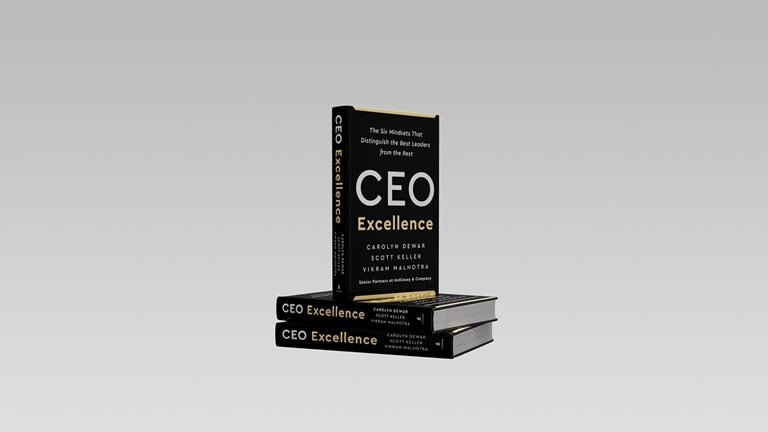

Leadership lessons from the world’s best CEOs The authors of the new book CEO Excellence, who interviewed dozens of the top-performing chief executives, share their most memorable encounters and stories. Get the scoop 
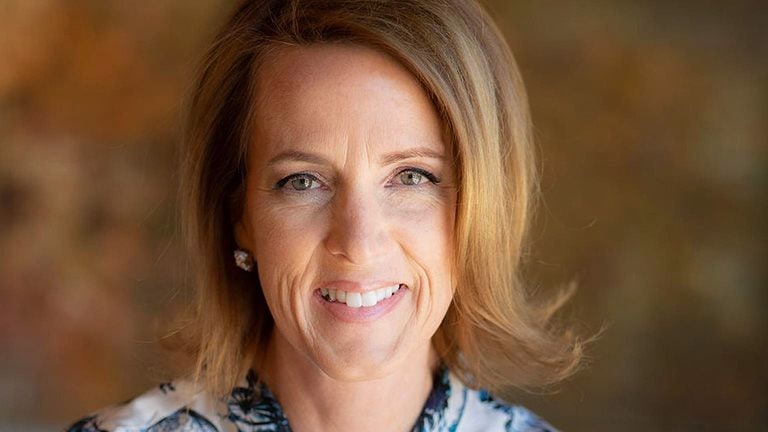

Author Talks: All along the S-curve Nurture individual growth and team development within your company. Encourage individual growth 


Follow our thinking 



Share these insights Did you enjoy this newsletter? Forward it to colleagues and friends so they can subscribe too.
Was this issue forwarded to you? Sign up for it and sample our 40+ other free email subscriptions here.This email contains information about McKinsey’s research, insights, services, or events. By opening our emails or clicking on links, you agree to our use of cookies and web tracking technology. For more information on how we use and protect your information, please review our privacy policy. You received this email because you subscribed to the Daily Read newsletter. Manage subscriptions | Unsubscribe Copyright © 2022 | McKinsey & Company, 3 World Trade Center, 175 Greenwich Street, New York, NY 10007
by "McKinsey Daily Read" <publishing@email.mckinsey.com> - 06:25 - 28 Feb 2022 -
Getting Started with Remote
Hi MD,I noticed you recently signed up for an account with Remote. I’m here to help ensure you have everything you need to onboard and pay your new remote hires.The easiest way to get you set-up would be to jump on a call with one of our Global Employment Specialists. On this call, we can address your questions and show you how to add an employee to your account.Thanks,Neha|Neha GuptaGlobal Employment AdvisorIf you'd like me to stop sending you emails, please click here
by "Neha Gupta" <neha@remote.com> - 11:23 - 28 Feb 2022 -
You + Remote = global hiring nirvana
You + Remote = global hiring nirvana
We're obsessed with creating a delightful experience for you and your hires every step of the way—and it shows.Let's face it—It's way too easy for software users to feel disconnected and disenchanted. Then they hit an inevitable wall of frustration.
At Remote, we won't let that happen.
Our world-class services organization ensures that you and your team have the resources you need to smoothly onboard and manage every aspect of global HR. Here are just a few of the ways we get it right:
✍️ Registration
Follow our simple, guided process to set up your company's Remote account, add your first employee, and invite them to start the onboarding process. If you get stuck or have questions, we'll be there to help.
Pro tip: Leverage our highly-specialized legal and HR pros to help you make the right decisions when setting up your global hiring process and offerings.
👭 Onboarding
If your employee needs a nudge to register and complete their profile in Remote, we'll reach out to encourage and guide them. We'll also assign a region-specific HR onboarding specialist to help and keep them moving forward. And our HR always feels like an extension of your company.
🕵️ Legal & Compliance
Our team will verify your new hire's identity and check all relevant documentation. We'll also take the information provided in the SLA and onboarding registration to create compliant documents and contracts based on their location.
📄 contracts
We'll invite the employee to review and sign their contract and other legal documents. If they have concerns or need to make changes, Remote's team of experts steps in to ensure a smooth process and that both parties are satisfied. Once signed, they can begin legally working.
🧘 Benefits
We'll invite the employee to review and sign their contract and other legal documents. If they have concerns or need to make changes, Remote's experts again will assist them and make sure both parties are satisfied. Once signed, they can begin legally working.
💰 Payroll
Once you've reviewed and approved the invoice, we'll upload your employee's payslip to their Remote portal. They'll be paid on time and in their preferred currency.
💻 Remote dashboard
You'll be able to conveniently manage all aspects of global HR for your employees from the easy-to-use, browser-based Remote dashboard. Your employees will also be able to access everything from their own dashboard, including important documents, payslips, time off, expenses, and personal details.
Global HR Solutions for the future of work.
Book a free international hiring consultation.
You received this email because you are subscribed to Marketing communications from Remote Technology, Inc.
Update your email preferences to choose the types of emails you receive.
Unsubscribe from all future emailsRemote Technology, Inc.
Copyright © 2022 Remote Technology, Inc. All rights reserved.
18 Bartol St. #1163 San Francisco California
by "Remote" <hello@remote-comms.com> - 04:10 - 28 Feb 2022 -
A leader’s guide to managing and improving performance
Leading Off
Make it better .
Share this email 



ESSENTIALS FOR LEADERS AND THOSE THEY LEAD 
When the workers in a glass factory were rewarded for the weight of the product they made, they crafted heavy glass that was too thick to see through. When the reward was changed to the quantity produced, they turned out huge sheets of glass that broke because they were too thin. Management lore is replete with such examples of how poor metrics, poor targets, and lack of standardized processes can derail performance. Now, as organizations transition to remote and hybrid work, the stakes are much higher, especially for many knowledge workers. How can leaders manage performance effectively when they can’t physically observe work hours and inputs? This week, let’s review some tactics that work—and some that don’t. AN IDEA 
Make sure your evaluations are fair—and perceived as such Organizations have tried a variety of experiments to enhance employee performance, even dropping annual reviews and doing away with rankings based on a curve when these tools were thought to hinder rather than promote better performance. But performance improvement continues to languish. The reason? Employees don’t perceive the performance management system as fair, according to a McKinsey survey. To counter this perception, leaders must transparently link employees’ goals to business priorities, teach managers to coach effectively, and differentiate compensation for top performers. Among companies that adopted all three of these practices, 84 percent of respondents said that their organization had an effective performance management system; they were also 12 times more likely to report positive results from it than respondents from companies that hadn’t taken any of these steps. Team-based performance management is another fairness-oriented practice to consider, since it rewards teams, rather than individual contributors, for their output. 
A BIG NUMBER 49 That’s the percentage of resilient organizations—high performers with agile, people-centric strategies—that increased their investment in coaching during the pandemic. Sixty percent of resilient organizations also gave more recognition to employees. By contrast, just 26 percent of nonresilient companies boosted their coaching investment, and only 24 percent provided more employee recognition. Coaching enables leaders at all levels to not only develop their teams but also cultivate their own growth mindset. Middle management roles, flattened during the COVID-19 pandemic, are making a comeback as organizations recognize their importance in coaching and performance management. 

A QUOTE “Companies rarely promote people into leadership roles who haven’t been consistently seen and measured.” That’s business power couple Jack and Suzy Welch, writing in a BusinessWeek column in 2007. Not so long ago, “face time”—being physically present and visible at the workplace—may have been an implicit requirement for getting ahead; one study found that employees who worked remotely got lower performance ratings, smaller raises, and fewer promotions than their colleagues who showed up at the office. (There were even subcategories of face time: it could be “passive,” meaning that you were simply seen at work during normal business hours, or “extracurricular,” which involved people noticing you arrive early, stay late, or work on weekends.) The move to remote work during the pandemic has complicated the face time calculation. Leaders need to look out for hidden biases and make special efforts to evaluate performance impartially. 
A SPOTLIGHT INTERVIEW 
“In-office interaction can be well thought out, just like an off-site,” says McKinsey’s Brooke Weddle in this podcast on reshaping culture in the hybrid workplace. “Going in for the sake of going in—I think those days are over.” Instead, leaders must orchestrate in-office interactions that are intentional, inclusive, and designed to produce specific outcomes. That involves monitoring employee sentiment as well as business-specific performance indicators. “Every executive team should be looking at a dashboard that’s a mix of performance and health and developing clear metrics that allow them to steer toward success,” Weddle says. 
THE COST OF BURNOUT 
What shouldn’t you do to assess performance? Consider the number of hours worked. Like face time, overtime can be a misleading indicator and, if pushed to extremes, can cause severe mental and physical harm. One company’s internal survey revealed that employees put in workweeks of up to 120 hours. Long hours may be necessary in some industries and roles, but leaders should be aware of when to draw the line. Research shows that productivity drops sharply beyond a certain number of hours worked; in one experiment, working less made people more efficient. Focus on the quality, quantity, and timeliness of the work rather than the hours that people spend sitting at a desk. Lead fairly. — Edited by Rama Ramaswami, a senior editor in McKinsey’s Stamford office 

Follow our thinking 



Share these insights Did you enjoy this newsletter? Forward it to colleagues and friends so they can subscribe too.
Was this issue forwarded to you? Sign up for it and sample our 40+ other free email subscriptions here.This email contains information about McKinsey’s research, insights, services, or events. By opening our emails or clicking on links, you agree to our use of cookies and web tracking technology. For more information on how we use and protect your information, please review our privacy policy. You received this email because you subscribed to the Leading Off newsletter. Manage subscriptions | Unsubscribe Copyright © 2022 | McKinsey & Company, 3 World Trade Center, 175 Greenwich Street, New York, NY 10007
by "McKinsey Leading Off" <publishing@email.mckinsey.com> - 02:06 - 28 Feb 2022 -
By 2031, ransomware attacks could occur every 2 seconds. Are you prepared?
McKinsey&Company
Payouts are growing sky-high .

On cybersecurity The news • It’s a C-suite concern. In this era of remote working, executives need to be particularly well versed in cybersecurity. Hackers are already using technology to cheat organizations out of millions of dollars by, for example, creating audio that impersonates a trusted party. A company’s ability to protect itself from cybercrimes will depend on its understanding of how to battle these newer risks, such as the viral spread of disinformation and deepfakes—which attackers will “almost certainly” use against businesses this year, warns the US Federal Bureau of Investigation. [FT] • Rising ransom payments. Victims of hacking were scammed out of $1.3 billion in the past two years, a new report reveals. Ransomware payments soared to $602 million in 2021, up from $152 million in 2019. The report noted that the 2021 figure is probably an underestimate, since many cybercrime victims don’t disclose that they’ve been hacked or that they’ve paid ransoms. Recently, the Australian, UK, and US governments issued a joint warning about the heightened threat from ransomware. [Bloomberg] 
To achieve a secure work environment, you need to know what technology you have, what and who it is talking to, and then watch it like a hawk. 
Our insights • Cat and mouse. Thanks to rapidly advancing digitization, companies and communities are more connected than ever. This means that ransomware attacks can easily cost tens of millions of dollars and affect millions of people. Cybercriminals are growing ever-more sophisticated, dwelling undetected within victims’ environments to understand where the highest-value data and information are, and then selling that to other bidders. • Security gaps. In 60% of ransomware cases, users install malware directly or through desktop-sharing apps. Many employees are working from home during the COVID-19 pandemic, but home networks are often poorly secured. In addition, legacy systems often chug along on outdated software with security gaps. Learn the four essential strategies for fighting back against ransomware, including how to prevent, prepare for, respond to, and recover from ransomware attacks. — Edited by Belinda Yu Secure your enterprise 
Was this forwarded to you? Sign up here. Or send us feedback — we’d love to hear from you. 

Follow our thinking 


This email contains information about McKinsey’s research, insights, services, or events. By opening our emails or clicking on links, you agree to our use of cookies and web tracking technology. For more information on how we use and protect your information, please review our privacy policy. You received this email because you subscribed to the On Point newsletter. Manage subscriptions | Unsubscribe Copyright © 2022 | McKinsey & Company, 3 World Trade Center, 175 Greenwich Street, New York, NY 10007
by "McKinsey On Point" <publishing@email.mckinsey.com> - 12:46 - 28 Feb 2022 -
The week in charts
the Daily read
The shift to at-home care, why corporate buyers prefer e-commerce, and more .
Share this email 



ALL THE WEEK’S DATA THAT'S FIT TO VISUALIZE 
Our Charting the path to the next normal series offers a daily chart that helps explain a changing world—during the pandemic and beyond. In case you missed them, this week’s graphics explored the extent to which care could shift from traditional facilities to the home, the most effective sales channel according to corporate customers, the potential growth opportunties for countries with rich stocks of natural capital, how different groups of companies approach machine intelligence, and why executives are looking internally to address capability gaps. FEATURED CHART The doctor is in—the video call 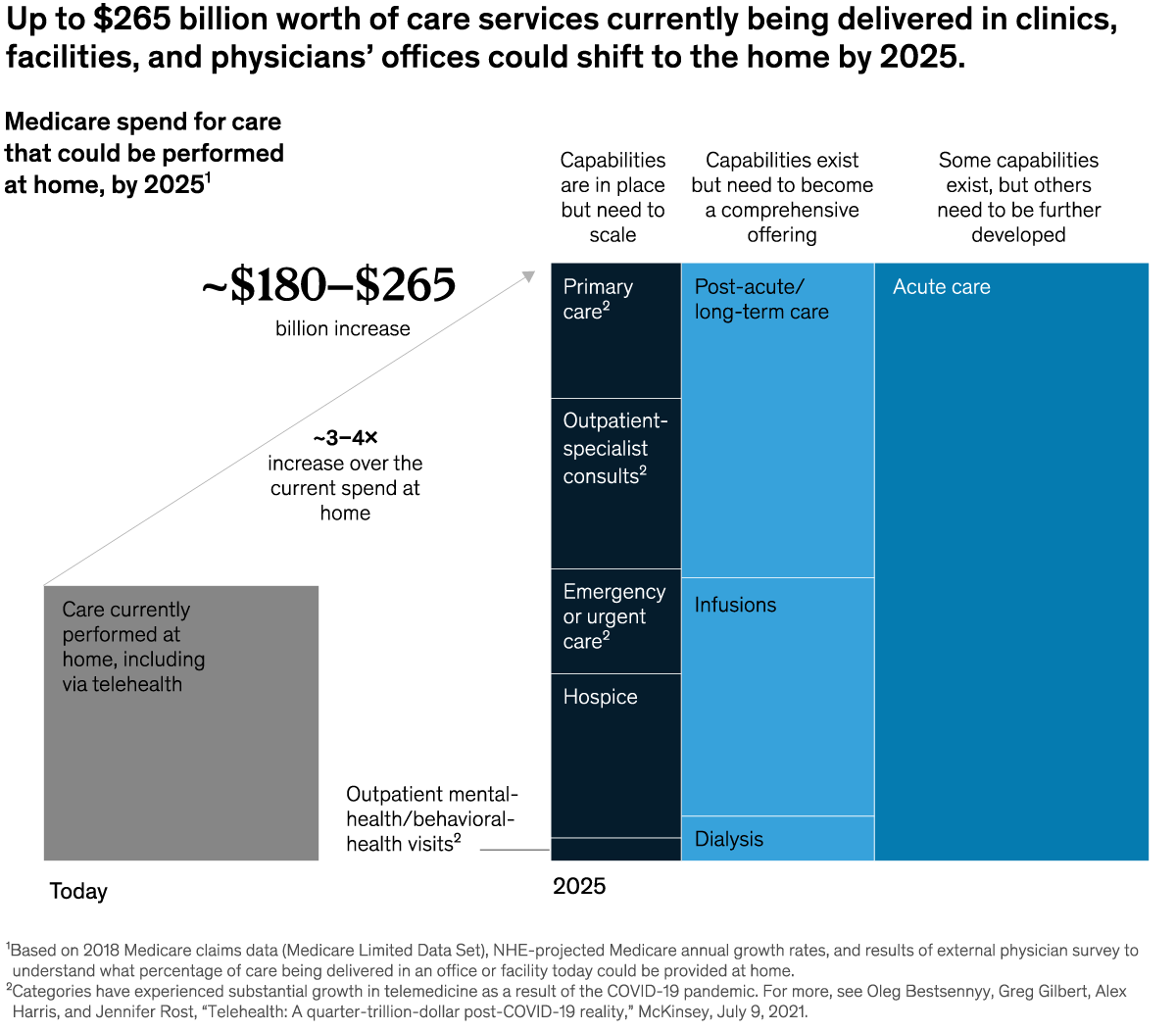
See more 



This week’s other select charts A sale with a click, not a handshake A natural bounty Machines that teach themselves Look inward, not outward 

Follow our thinking 



Share these insights Did you enjoy this newsletter? Forward it to colleagues and friends so they can subscribe too.
Was this issue forwarded to you? Sign up for it and sample our 40+ other free email subscriptions here.This email contains information about McKinsey’s research, insights, services, or events. By opening our emails or clicking on links, you agree to our use of cookies and web tracking technology. For more information on how we use and protect your information, please review our privacy policy. You received this email because you subscribed to The Week in Charts newsletter. Manage subscriptions | Unsubscribe Copyright © 2022 | McKinsey & Company, 3 World Trade Center, 175 Greenwich Street, New York, NY 10007
by "McKinsey Week in Charts" <publishing@email.mckinsey.com> - 03:41 - 26 Feb 2022 -
Could succession planning become obsolete?
Readers & Leaders
Futurism—for real THIS MONTH'S PAGE-TURNERS ON BUSINESS AND BEYOND
As tech innovators continue to push the boundaries with virtual reality, scientists are hard at work on editing the natural one. But it’s not sci-fi—it’s synthetic biology, a field of science that combines design, computers, and biology to allow for the engineering of living cells. In this edition of Readers & Leaders—McKinsey’s monthly newsletter on the books that business leaders are reading—catch a discussion with Amy Webb on the future of synthetic biology; learn about the best leadership insights from the world’s top CEOs; see this month’s bestselling business books, prepared exclusively for McKinsey by NPD BookScan; and more. Itching for more good reads? Check out McKinsey on Books for the latest. And to get Readers & Leaders in your inbox monthly, click here to subscribe.
AUTHOR TALKS
Biological cell editing—or synthetic biology—is poised to affect nearly every facet of life, from healthcare to restaurant dining to life expectancy, which raises some interesting questions: How could synthetic biology be used to control how we create our children? Where will we source our food in the future? And what would succession planning look like in a world where people lived much longer than they do today? In a recent edition of Author Talks, leading futurist Amy Webb discusses these and other science-based hypotheticals from her new book, The Genesis Machine: Our Quest to Rewrite Life in the Age of Synthetic Biology (Hachette Book Group, February 2022).
“The biggest and the most durable inventions of the 21st century are going to be at the nexus of biology and technology. For that reason, I cannot think of an industry that synthetic biology will not have some impact on over the next decade. Pharmaceuticals, industrial materials, auto manufacturers, banks, everybody in some way will play a role in what’s coming.” Watch the full interviewIT BEARS REPEATING
—Vik Malhotra, McKinsey senior partner and coauthor of CEO Excellence: The Six Mindsets That Distinguish the Best Leaders from the Rest (Scribner, March 2022), in a video on how the best CEOs engage their boards. Read more in “Author Talks: What separates the best CEOs from the rest?”
IN CASE YOU MISSED IT
Google’s Neil Hoyne teaches us how to build consumer trust: “Consumers who sign up for a gym membership are really only going to go six times in that entire year. Simply buying something isn’t enough, and companies were falling into the same trap. They were saying, ‘With software, this will unlock all of our data.’” Watch the full interview.
Ruchika Tulshyan explains how workplace inclusion efforts can backfire: “Some of the advice that’s given to women, such as ‘negotiate harder’ or ‘be more confident’ or ‘fake it till you make it,’ has actually been found to be detrimental for women’s careers. It continues putting the onus on women to change, when actually a lot of the challenges we face are systemic and need to be addressed by the organizations.” Watch the full interview.
Whitney Johnson shares strategies for individual and team development: “People are really evaluating their lives, and they’re asking themselves, ‘Do I want more?’ I don’t so much think it’s the Great Resignation. Yes, people are resigning, but what I really think is happening is the Great Aspiration. People are aspiring for more—they’re not resigning from. They’re aspiring for more because they want to grow.” Watch the full interview.BUSINESS BESTSELLERS TOP
8
Daylight saving time is right around the corner. Find a window seat and take advantage of the extra hour of sunlight with this month’s top business bestsellers in eight categories, prepared exclusively for McKinsey by NPD BookScan, and explore the full lists on McKinsey on Books.
BUSINESS OVERALL
Atomic Habits: An Easy & Proven Way To Build Good Habits & Break Bad Ones by James Clear (Penguin Group USA)
BUSINESS HARDCOVER
Atomic Habits: An Easy & Proven Way To Build Good Habits & Break Bad Ones by James Clear (Penguin Group USA)
DECISION MAKING
Blink: The Power of Thinking Without Thinking by Malcolm Gladwell (Hachette Book Group)
ECONOMICS
COVID-19: The Great Reset by Thierry Malleret and Klaus Schwab (Lightning Source Inc.)
ORGANIZATIONAL BEHAVIOR
Atomic Habits: An Easy & Proven Way To Build Good Habits & Break Bad Ones by James Clear (Penguin Group USA)
WORKPLACE CULTURE
Who Moved My Cheese?: An Amazing Way to Deal with Change in Your Work and in Your Life by Spencer Johnson (Penguin Group USA)
DIVERSITY & INCLUSION
Caste (Oprah's Book Club): The Origins of Our Discontents by Isabel Wilkerson (Random House)
SUSTAINABILITY
Net Positive: How Courageous Companies Thrive by Giving More Than They Take by Paul Polman and Andrew Winston (Harvard Business Review Press)
WHAT WE’RE READING
1. There There, by Tommy Orange, a member of the Cheyenne and Arapaho tribes of Oklahoma, weaves together the stories of 12 Native Americans as they come together for the Big Oakland Powwow. The characters (some of whom are related) humanize the complex and painful history of urban American Indians, who, as the author writes, “know the sound of the freeway better than we do rivers.”
2. A Burning, by Megha Majumdar, is a cautionary tale of what can happen when people make decisions based on ambition. It centers around a terrorist attack in contemporary India and the intertwined fates of three characters—a Muslim girl who makes a pointed comment about the attack on Facebook, an opportunistic teacher, and a charismatic outcast who dreams of fame.
3. Unbroken: A World War II Story of Survival, Resilience, and Redemption, by Laura Hillenbrand, is one of the best examples of a life story that seems too unbelievable to be real. It focuses on Louis Zamperini, a World War II veteran who was an Olympic track star, an army officer, and a survivor of three prisoner-of-war camps in Japan after being stranded in the Pacific Ocean for 47 days.
4. Brain on Fire: My Month of Madness, by Susannah Cahalan, is an insightful portrayal of an out-of-body experience in which the author suffers from a rare, rapid-onset disease that transforms her personality and causes her to suffer paranoid delusions, until she is eventually able to uncover a diagnosis and start treatment.
5. Why We Sleep: Unlocking the Power of Sleep and Dreams, by Matthew Walker, is a fascinating wake-up call (so to speak) on sleep deprivation. The stats are compelling: for example, in one study, the effects of getting even six hours of sleep a night for ten days were the same as going without sleep for 24 hours straight.
6. Sapiens: A Brief History of Humankind, by Yuval Noah Harari, is an excellent survey course on the progress of human evolution. Complex topics, including key inflection points of humanity (for example, agricultural revolution, scientific revolution), are covered in an accessible way with insightful commentary on why humans have evolved the way they have.
This reading list was compiled by Anna Pione, a partner in New York who leads McKinsey’s consumer health and wellness service line, including the firm’s global research on the Future of Wellness. This segment was adapted from the Shortlist, McKinsey’s weekly newsletter on timely topics, edited by Barbara Tierney.BOOKMARK THIS
The McKinsey Download Hub
Download McKinsey’s signature reports and special collections on the management issues that matter, from leading through the COVID-19 crisis to managing risk and digitizing operations.
Your latest McKinsey Crossword: State your name
37-Down: Car company that had the slogan “Born from jets.” Can you solve it?
CEO Excellence
Coming March 15, McKinsey’s authoritative new #CEOExcellenceBook outlines the six mindsets that distinguish the best leaders from the rest, based on rigorous research across more than 20 years’ worth of data on 7,800 CEOs from 3,500 public companies across 70 countries and 24 industries.
If you’d like to propose a book or author for #AuthorTalks, please email us at Author_Talks@Mckinsey.com. Due to the high volume of requests, we will respond only to those being considered.
—Edited by Molly Liebergall, an editor in McKinsey's New York office
Share these insights
Did you enjoy this newsletter? Forward it to colleagues and friends so they can subscribe too.
Was this issue forwarded to you? Sign up for it and sample our 40+ other free email subscriptions here.
This email contains information about McKinsey's research, insights, services, or events. By opening our emails or clicking on links, you agree to our use of cookies and web tracking technology. For more information on how we use and protect your information, please review our privacy policy.
You received this email because you subscribed to the Readers & Leaders newsletter.
Copyright © 2022 | McKinsey & Company, 3 World Trade Center, 175 Greenwich Street, New York, NY 10007
by "McKinsey Readers & Leaders" <publishing@email.mckinsey.com> - 11:13 - 26 Feb 2022 -
The Tyk Times: Tyk 4.0 is here!
The Tyk Times: Tyk 4.0 is here!
Tyk 4.0 is here! Discover the next generation of data management.Join us for a Hangout with Matteo Collina &
James Higginbotham
We have a couple of extra-special hangouts coming up. First, join our GraphQL Hangout on 2 March as we welcome special guest, Matteo Collina of Nearform, to chat about GraphQL caching!
Then on 3 March, join our API Hangout with Executive API Consultant, James Higginbotham, as we chat about the principles of web API design.
Hope to hang with you soon!
Tyk, 87a Worship Street, London, City of London EC2A 2BE, United Kingdom, +44 (0)20 3409 1911
by "Martin Buhr" <martin.buhr@tyk.io> - 04:00 - 26 Feb 2022 -
Here is Your 30% Discount Code for Your Order
Dear Customer,
Thank you for accepting Exam-Labs.com's promo offer. As special thank you, we're giving you 30% discount code for order.
Your discount code: 30LABS
Visit Exam-Labs.com to redeem your 30% discount code.
--
Sincerely,
Exam-Labs Support Team
support@exam-labs.com
http://www.exam-labs.com/
by "Exam-Labs.com" <support@exam-labs.com> - 11:29 - 25 Feb 2022 -
Exam-Labs.com - Confirm Your E-mail Address
Exam-Labs - Confirm Your Email Address

Hello.
Congratulations! You've just created an account with Exam-Labs.com
But you're not finished yet.
To activate your account and confirm ownership of this email address info@learn.odoo.com, please click the link below:
https://www.exam-labs.com/confirm?code=2413932eb2e69043b19a5717230ee14f
Remember to confirm your email address today, so you can start using your new account.Sincerely,
Exam-Labs Support Team
support@exam-labs.com
https://www.exam-labs.com
Join our reseller program and earn: https://www.exam-labs.com/resellerNOTICE: You have received this email at info@learn.odoo.com as you are a registered member of Exam-Labs.com. If you wish to discontinue receiving the Exam-Labs.com emails, please UNSUBSCRIBE
by "Exam-Labs.com" <support@exam-labs.com> - 11:29 - 25 Feb 2022 -
Confirmation instructions
Welcome info@learn.odoo.com!
You can confirm your account email through the link below:
by GI@activpayroll.com - 10:25 - 25 Feb 2022 -
Confirm your email address
Remote

Welcome to Remote!
Hello MD Abul Khayer,
Please confirm your email address to continue creating your account with Remote!
Kind Regards,
Remote
by "Remote" <no-reply@remote.com> - 10:19 - 25 Feb 2022 -
Want to be a better leader? You can learn from the world’s best CEOs
the Daily read
Get the scoop .
Share this email 



AN ARTICLE A DAY, PICKED BY OUR EDITORS 
Quick, what’s one word you’d use to describe a leader you admire? “Charismatic” or “bold” might spring to mind—but what about “humble” or “resilient”? These traits are crucial, say the authors of McKinsey’s forthcoming CEO Excellence book (available to preorder), in the latest Inside the Strategy Room podcast episode. The lively conversation with Carolyn Dewar, Scott Keller, and Vik Malhotra highlights leadership lessons from nearly 70 CEOs, with insight on the practices and mindsets that set the best CEOs apart, touching on everything from managing through the pandemic and other crises to making big strategic bets. Don’t miss it. — Emily Adeyanju, digital editor, New York 
Leadership lessons from the world’s best CEOs The authors of the new book CEO Excellence, who interviewed dozens of the top-performing chief executives, share their most memorable encounters and stories. Get the scoop 

Quote of the Day —Shubham Singhal, senior partner, on the impact of the COVID-19 Omicron variant on businesses in “New variant, new challenges: How are we coping with Omicron?” 
Chart of the Day See today’s chart 
Also New 

The McKinsey Crossword: State Your Name | No. 64 Sharpen your problem-solving skills the McKinsey way, with our weekly crossword. Each puzzle is created with the McKinsey audience in mind, and includes a subtle (and sometimes not-so-subtle) business theme for you to find. Answers that are directionally correct may not cut it if you’re looking for a quick win. Play now 


Addressing the state of behavioral health in New York City The city’s economic disparities and diverse populations pose unique challenges for behavioral-health access. Understand the issues 


Five digital and analytics battlegrounds for B2B aftermarket growth A differentiated commercial engine focused on just a few digital and analytics levers can more than double aftermarket revenues for industrial companies. Think outside of the box 


Follow our thinking 



Share these insights Did you enjoy this newsletter? Forward it to colleagues and friends so they can subscribe too.
Was this issue forwarded to you? Sign up for it and sample our 40+ other free email subscriptions here.This email contains information about McKinsey’s research, insights, services, or events. By opening our emails or clicking on links, you agree to our use of cookies and web tracking technology. For more information on how we use and protect your information, please review our privacy policy. You received this email because you subscribed to the Daily Read newsletter. Manage subscriptions | Unsubscribe Copyright © 2022 | McKinsey & Company, 3 World Trade Center, 175 Greenwich Street, New York, NY 10007
by "McKinsey Daily Read" <publishing@email.mckinsey.com> - 05:09 - 25 Feb 2022 -
Mind, body, spirit: The wellness industry has got you covered
The Shortlist
Plus, the dawning age of synthetic biology .
Share this email 



Our best ideas, quick and curated | FEBRUARY 25, 2022 View in browser 
This week, we take a look at how the global wellness industry is responding to fast-changing consumer habits. Plus, the state of grocery retail in India, and how growing concern about climate change is affecting car buying in Asia. 
Healthy, wealthy, and wise. The $1.5 trillion wellness market is growing, thanks to consumers who are increasingly prioritizing their health and well-being. The acceleration of e-commerce during the COVID-19 pandemic, the widespread appeal of mobile fitness apps and trackers, and consumers’ growing willingness to share personal information with brands are all converging to make wellness more connected and customized than ever. We want wellness. People all over the world are increasingly aware of the importance of physical and mental health. According to a McKinsey survey of about 7,500 consumers, nearly 80 percent of respondents in Brazil, China, Germany, Japan, the UK, and the US think that wellness is important. In fact, consumers in every market we studied said that wellness has become a much bigger priority in the past two to three years. Make it personal. McKinsey consumer research also indicates a huge shift toward personalization in the wellness industry. In health, fitness, nutrition, appearance, sleep, and mindfulness, consumers—particularly in Brazil and China—are increasingly willing to engage with companies online and share personal data in exchange for more customized service, recommendations, and treatments. Blurred categories. Along those lines, wearables and fitness trackers are enabling fitness regimens to become better customized—for instance, through tracking a user’s exercise and sleep and providing personalized advice. These devices often cross into multiple product categories. Even so, a majority of consumers say that they don’t want a single solution or company to help them with every facet of wellness. This suggests that a more effective approach for companies may be to extend their brands in a targeted way—perhaps through M&A. No couch potatoes here. Lockdowns, stay-at-home orders, and social distancing forced even the most dedicated gym-goers to change their routines. Still, consumers found new ways to work out, including exercising at home, using connected fitness gear, and joining outdoor fitness classes. In fact, about 10 percent of the US population set up home gyms or accessed online fitness resources during the COVID-19 pandemic. On demand exercise. We spoke to a coach at one fitness studio that developed an online exercise platform early on in the COVID-19 pandemic. Shaun Robert Jenkins, senior training manager and head coach of a fast-growing NYC fitness studio, described two important pivots the company made during the COVID-19 crisis. “[We went] from our indoor studio to the outdoors, so that we could continue offering in-person fitness sessions in a physical space,” Jenkins said. “We also began to offer workouts in the digital space through our on-demand platform.” The online platform enabled the studio to deliver “a constant stream of content” to their members. An app a day. Speaking of exercise on demand, we end on something you likely have in your smartphone: a mobile-fitness app. Investors poured a record-breaking $2 billion into developing fitness-tech apps in 2020. Our research shows that more than a third of global consumers will likely spend more on nutrition apps, diet programs, juice cleanses, and subscription food services over the next year. As we enter a third year of the pandemic, thank goodness that there are myriad ways to get healthier, too.

OFF THE CHARTS That silent sound of electric vehicles taking off in Asia Consumers in Asia are increasingly concerned about climate change and sustainability. Our analysis indicates that by 2030, electric-vehicle sales will dramatically outpace sales of vehicles with internal combustion engines in China, India, Indonesia, and Japan. China leads the way, with 60 to 80 percent of vehicle sales expected to be electric or hybrid models by the next decade. In Japan, up to 60 percent of car sales could be electric in 2030, while in India and Indonesia, the share of electric-vehicle sales could reach 30 to 50 percent That shift will likely reshape the auto industry in fundamental ways—from the growing importance of battery suppliers to the new technical skills and capabilities required to produce electric vehicles. 
Check out our chart of the day here. 

PODCAST The Fourth Industrial Revolution depends on people Workers often fear that digitization and automation represent a threat to their livelihoods. But although some jobs will likely be displaced by new technologies, companies at the cutting edge of technology are actually creating many more new roles. In this edition of the McKinsey Talks Operations podcast, the WEF’s Francisco Betti leads a conversation on the use of digital technologies in manufacturing and the training workers need to enter the high-tech future. “When you learn new skills, when you educate yourself, you have the opportunity to live a better life,” says David Goeckeler, CEO of Western Digital and a panelist at the WEF event, Lighthouses Live. “It’s not just about our company being better and us being prepared for the future; it’s about all of our employees being ready for that future.” 
MORE ON MCKINSEY.COM The state of grocery retail in India | The grocery market in India has evolved considerably in the past decade. This report examines the changing face of demand, dynamics and disruption in the sector, and the implications for retailers and consumer-packaged-goods companies alike. Why private equity sees life and annuities as an enticing form of permanent capital | Private acquisitions of in-force books are growing—we have a playbook for those considering market entry, those already in, and insurers wondering how to respond. Climate risk and the opportunity for real estate | Real-estate leaders should revalue assets, decarbonize, and create new business opportunities. Here’s how. 


THREE QUESTIONS FOR Amy Webb Leading futurist and business adviser Amy Webb’s new book, The Genesis Machine: Our Quest to Rewrite Life in the Age of Synthetic Biology (coauthored by Andrew Hessel) explores the risks and rewards of synthetic biology, a new and rapidly expanding field. This is an excerpt from a recent edition of Author Talks on McKinsey.com. Why is this the time to read about synthetic biology? The first reason has to do with investment. SARS-CoV-2, which is the virus that causes COVID-19, acted as a catalyst for genetic sequencing—for synthesis. It broke us free of our existing mental models for what a virus was and how it spread, for pathogen detection, and new ways to inoculate people. That attracted significant investment. There’s a flood of capital being directed at synthetic biology, which means that in the next 24 to 36 months, we’re going to start to see this ecosystem really develop. The second reason has to do with risks. In the future, the most worrying data security breaches could actually involve our DNA. In this biological era that we’re entering, it could be a major information security problem. There are easy ways to scrape somebody’s genetic code. That could have widespread implications if that person is a politician or is the CEO of a big company. The third reason actually has to do with solutions. It’s hard to get people to change. We just saw at COP26, the big climate-change conference, that world leaders are just not going to act fast enough to mitigate the climate crisis, especially when what we’re asking countries to do is to stop contributing to their economy by scaling back some of their manufacturing or having to change it. We’re going to have to develop alternatives. Why should CEOs and businesses care now about synthetic biology? Synthetic biology is a new term to just about everybody. At some point, artificial intelligence was also a new term. We talk about AI today, but most of what we’re talking about has to do with other things, like the impact of automation. AI is here; it’s invisible; most of our daily activities require it; it’s fundamental. We’re going to be in the same place ten or 15 years from now with synthetic biology. The biggest and most durable inventions of the 21st century are going to be at the nexus of biology and technology. For that reason, I cannot think of an industry that synthetic biology will not have some impact on over the next decade. Pharmaceuticals, industrial materials, auto manufacturers, banks, everybody in some way will play a role in what’s coming. Can synthetic biology’s benefits be both accessible and inclusive globally? The genetic databases don’t tend to include people of color. Historically, our governments have done awful things to people of color in the name of experimentation. We’re going to have to figure out ways to engender trust because this technology gives us optionality. It also gives us other ways to think through the problems that we keep trying to attack with similar solutions that aren’t making any real change. What gives me hope is that between human ingenuity and the science and technology that we have access to, we can right some of our wrongs, and we can create better futures. But we can’t approach that with outright fear or a complete utopian ideal. We have to take a pragmatic approach. If we can do that, then we live longer, better, healthier, happier lives. It’s going to be hard work, though. — Edited by Belinda Yu Share this Q&A 



BACKTALK Have feedback or other ideas? We’d love to hear from you. 
Tell us what you think 

Follow our thinking 



Share these insights Did you enjoy this newsletter? Forward it to colleagues and friends so they can subscribe too.
Was this issue forwarded to you? Sign up for it and sample our 40+ other free email subscriptions here.This email contains information about McKinsey’s research, insights, services, or events. By opening our emails or clicking on links, you agree to our use of cookies and web tracking technology. For more information on how we use and protect your information, please review our privacy policy. You received this email because you subscribed to The Shortlist newsletter. Manage subscriptions | Unsubscribe Copyright © 2022 | McKinsey & Company, 3 World Trade Center, 175 Greenwich Street, New York, NY 10007
by "McKinsey Shortlist" <publishing@email.mckinsey.com> - 02:23 - 25 Feb 2022 -
Feeling less connected to your virtual teammates? Here’s what to do about it.
McKinsey&Company
Creating happy hybrid teams .

The how-tos of hybrid The news • The “Great Disconnection.” Two-thirds of workers report feeling less connected with their colleagues in the pandemic shift to remote working. This disconnection is one of the largest drivers of voluntary employee turnover—one that’s cost US companies more than $400 billion annually. Because connection is such a crucial part of employee retention, managers should tackle it proactively, since spontaneous in-person watercooler conversations and coffee chitchats may happen less frequently in a hybrid workplace. [HBR] • Unhappy hour. Just as we’re rethinking hybrid work, so too can we reimagine team-building events into more inclusive, and potentially less alcohol-focused, activities. That’s especially important for the more than 14 million people in the US with an alcohol-use disorder, according to a 2019 survey. Cooking classes, book clubs, and game nights can bond your team members in fun ways that don’t exclude those who don’t want to—or can’t—indulge in alcohol. [Fortune] 
You don’t have to make all the decisions about your hybrid virtual model up front and in advance. See what happens. See where your best talent emerges. 
Our insights • Who’s in and who’s out. As companies continue to ponder return-to-work models, many are considering a hybrid approach. The potential benefits of a hybrid workplace include increased flexibility and productivity, lower costs, and better employee experience. But hybrid virtual models can run the risk of creating two separate organizational cultures—with the in-person culture dominating as workers benefit from on-site collaboration and colocation, our research shows. Meanwhile, the virtual workforce may feel left out and isolated, as a sense of belonging and common purpose get lost across the workforce and organizational performance deteriorates. • Making hybrid work for you. As you’re reimagining your postpandemic organization, pay heed to the effect of your choices on organizational culture: on the ties that bind your teams and on the core aspects of your leadership. There’s no single hybrid virtual model that works for every company, but the ideal model for your organization is one that will give stability, social cohesion, and a sense of identity and belonging to all employees—whether they’re in the office full-time, never, or sometimes. We’ve identified various hybrid models for leaders to consider, the factors involved in managing the transition, and metrics to ensure your new model is working. — Edited by Justine Jablonska Build teams better 
Was this forwarded to you? Sign up here. Or send us feedback — we’d love to hear from you. 

Follow our thinking 


This email contains information about McKinsey’s research, insights, services, or events. By opening our emails or clicking on links, you agree to our use of cookies and web tracking technology. For more information on how we use and protect your information, please review our privacy policy. You received this email because you subscribed to the On Point newsletter. Manage subscriptions | Unsubscribe Copyright © 2022 | McKinsey & Company, 3 World Trade Center, 175 Greenwich Street, New York, NY 10007
by "McKinsey On Point" <publishing@email.mckinsey.com> - 12:12 - 25 Feb 2022 -
Patients love telehealth—physicians are not so sure
the Daily read
Understand different perspectives .
Share this email 



AN ARTICLE A DAY, PICKED BY OUR EDITORS 
When it comes to your health, do you prefer your care to be IRL (in real life) or URL (virtual)? If you’ve had an online checkup recently, you’re not alone—indeed, 88 percent of consumers in a 2021 survey said they had used telehealth services since the pandemic began. But physicians are indicating they might prefer a return to more hands-on care. A new article can help you make sense of the disconnect between consumers and providers, plus the trends shaping what’s next for telehealth. Check it out. — Babi Oloko, digital editor, New York 
Patients love telehealth—physicians are not so sure During the pandemic, patients have said that they like telehealth, especially for behavioral-health treatment. But physicians say they are concerned about telehealth’s long-term sustainability. Understand different perspectives 

Quote of the Day “Getting humans beyond Mars is a real challenge because it’s very far. You start having trouble generating power and communicating. There are some technologies that we’re developing that can help, and if we can build upon these technologies, I think it will be possible to explore the outer solar system.” —Joe Landon of Lockheed Martin on humans going to Mars and beyond in a new article on the emerging space economy 
Chart of the Day See today’s chart 
Also New 

US wealth management: A growth agenda for the coming decade Mounting hopes of postpandemic recovery signal an imperative to prepare for the changes in technology, consumer needs, and society that will shape the future of the wealth management ecosystem. Adapt your models 


Creating good packaging for packaged goods The e-commerce boom, widespread concerns about sustainability, and the digitization trend are spurring innovation in the packaging industry. Many consumer products will soon be in packages that are stronger, sustainable, and smart. Leave a greener footprint 


Surveyed nurses consider leaving direct patient care at elevated rates Nurses and other healthcare professionals shed light on why they are considering leaving, as well as what might make them stay. Listen to healthcare workers 


Follow our thinking 



Share these insights Did you enjoy this newsletter? Forward it to colleagues and friends so they can subscribe too.
Was this issue forwarded to you? Sign up for it and sample our 40+ other free email subscriptions here.This email contains information about McKinsey’s research, insights, services, or events. By opening our emails or clicking on links, you agree to our use of cookies and web tracking technology. For more information on how we use and protect your information, please review our privacy policy. You received this email because you subscribed to the Daily Read newsletter. Manage subscriptions | Unsubscribe Copyright © 2022 | McKinsey & Company, 3 World Trade Center, 175 Greenwich Street, New York, NY 10007
by "McKinsey Daily Read" <publishing@email.mckinsey.com> - 06:37 - 24 Feb 2022 -
Why every hospital needs a garden
Intersection Subject Line
Taking a design approach to global health .
Share this email 



DELIVERING ON DIVERSITY, GENDER EQUALITY, AND INCLUSION 
In this issue, we reflect on a question posed by the late Dr. Paul Farmer. Plus: a look back at issues of Intersection that focus on Black history. THE QUESTION 
“What does the garden look like?”
— Dr. Paul FarmerThis week saw the passing of Dr. Paul Farmer, a champion of global health equity and a cofounder of the nonprofit organization Partners In Health. Dr. Farmer called for greater attention to be paid to people’s lived experiences, and he advocated for human-centered design to be incorporated into global health. Nearly a decade ago, he told Wired that “we have to design a health delivery system by actually talking to people and asking, ‘What would make this service better for you?’” Dr. Farmer recalled seeing people in Haiti who had been sleeping outside of a hospital for days, waiting to get in. “No one was asking them, ‘What are you eating while you’re waiting? What is your family eating while you’re gone?’” Dr. Farmer’s work has opened up new ways of thinking about design, its possibilities, and the moral commitments it might entail. This McKinsey article explores how global health leaders can strengthen public-health projects, programs, and organizations—and better serve people and communities around the world—by taking a design approach. Harnessing design means focusing on better understanding individuals’ needs and motivations, translating these insights into tangible ideas, and iteratively testing and refining prototypes before rolling out a solution. By engaging a broad set of stakeholders and end users throughout the entire process, those taking a design approach seek to ensure that the solutions that are implemented reflect people’s lived experiences. (Here’s more on the use of design in global health.) Dr. Farmer also saw the value of a different sort of design—including the design of buildings and landscapes. In a 2020 discussion with the nonprofit MASS Design Group, he described “attending to the beauty” of such design as “a mark of respect” and a matter of human dignity. After all, he pointed out, any hospital in a city such as Boston would be expected to have a garden. Why, then, shouldn’t a district hospital in Rwanda have one too? “Some people would say to me, ‘What garden?’ Really? You’d go to a hospital in Boston and expect it not to have any quiet, lovely place—whether it’s on the inside or the outside? Wouldn’t you expect that?” Butaro Hospital was built in 2011—and it was built with gardens. 
THE TAKEAWAY 
Here’s a look back at issues of Intersection that focus on Black history. - What it meant to see Sidney Poitier on screen—in the words of journalist Wil Haygood (pictured above)
- Women leaders who stepped into new roles last year—including Rosalind Brewer, Thasunda Brown Duckett, and Michaela Jaé Rodriguez
- The role of historically Black colleges and universities in increasing economic mobility among Black Americans
- An initiative aimed at eliminating America’s racial wealth gap through “deliberate, collective action”
- The lessons we can learn from Ida B. Wells
- An investment in Black women led by Black women
- How US National Youth Poet Laureate Amanda Gorman is lighting the way
— Edited by Julia Arnous, an editor in McKinsey’s Boston office 

Follow our thinking 



Share these insights Did you enjoy this newsletter? Forward it to colleagues and friends so they can subscribe too.
Was this issue forwarded to you? Sign up for it and sample our 40+ other free email subscriptions here.This email contains information about McKinsey’s research, insights, services, or events. By opening our emails or clicking on links, you agree to our use of cookies and web tracking technology. For more information on how we use and protect your information, please review our privacy policy. You received this email because you subscribed to the Intersection newsletter. Manage subscriptions | Unsubscribe Copyright © 2022 | McKinsey & Company, 3 World Trade Center, 175 Greenwich Street, New York, NY 10007
by "McKinsey Intersection" <publishing@email.mckinsey.com> - 02:33 - 24 Feb 2022


